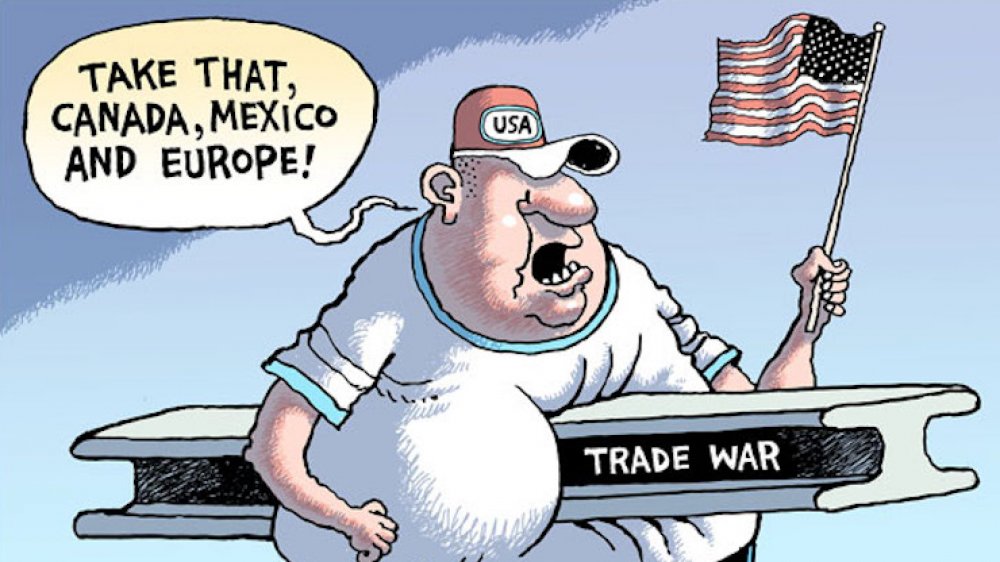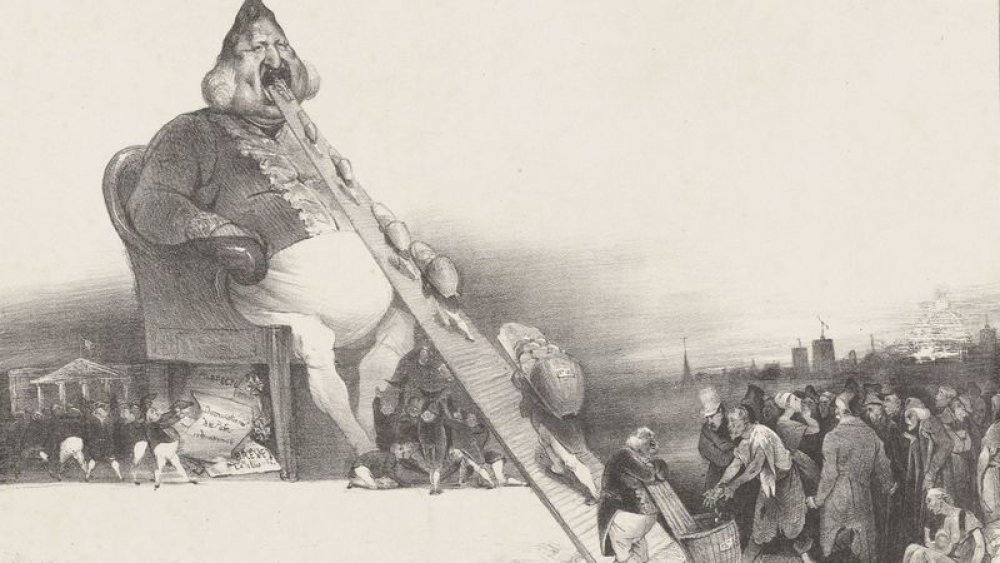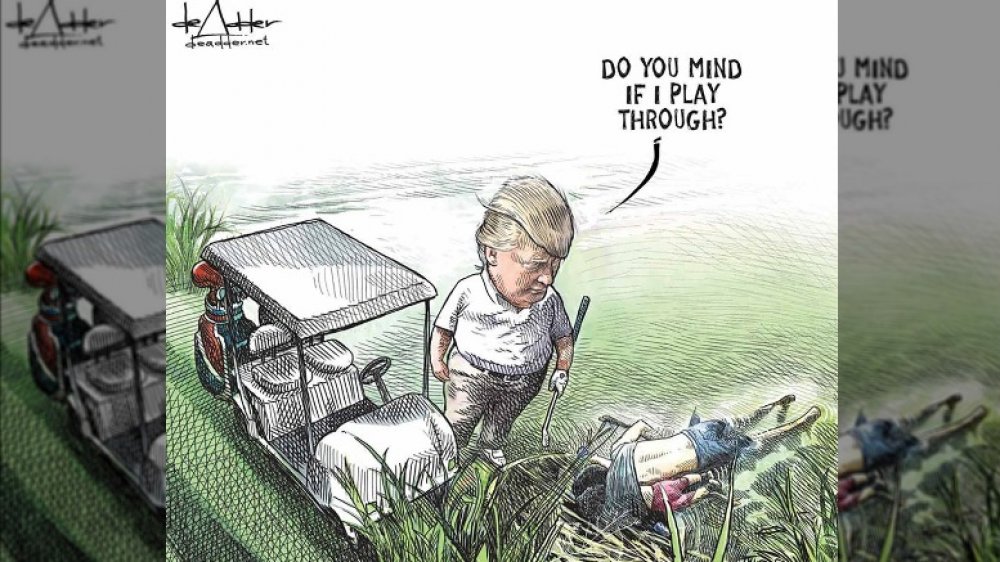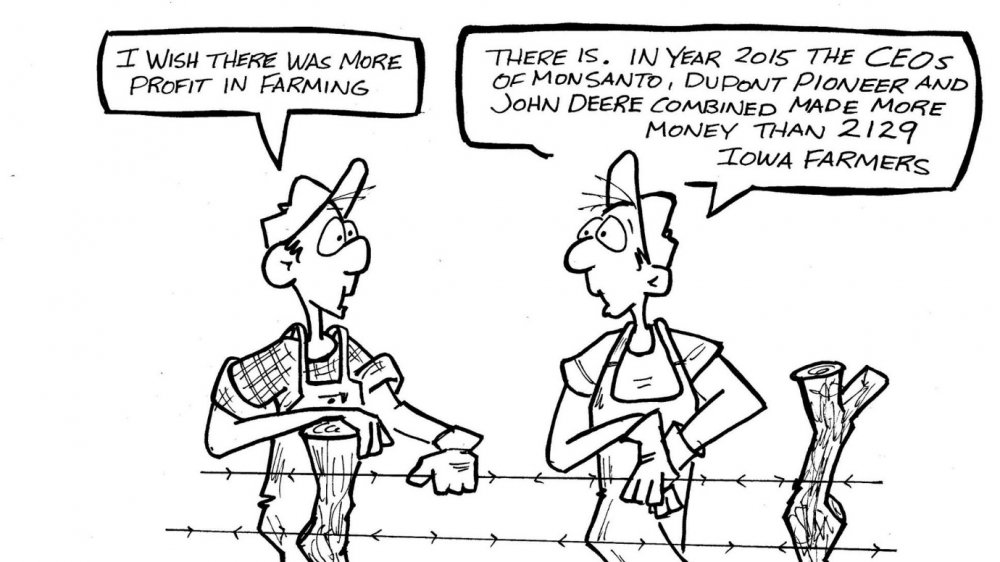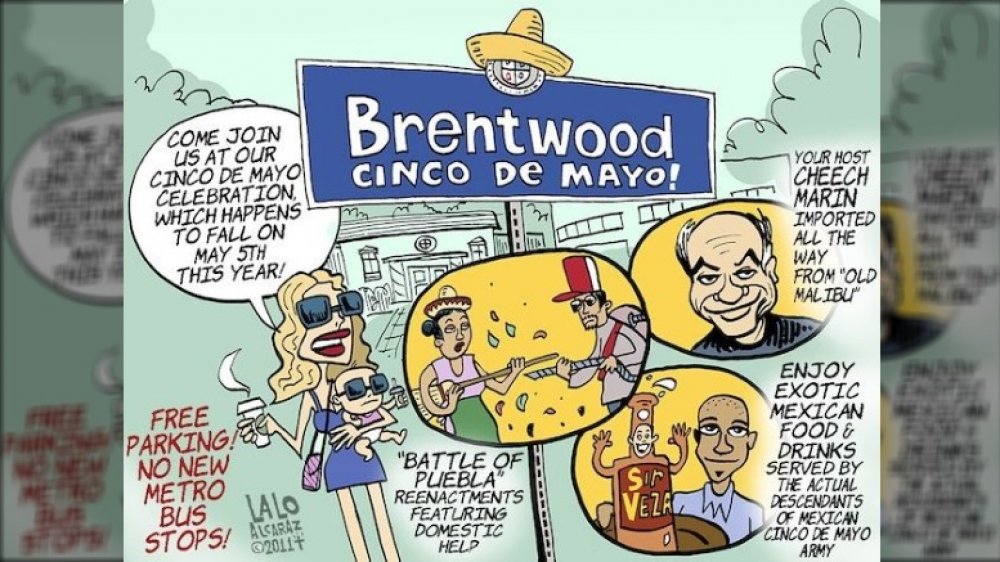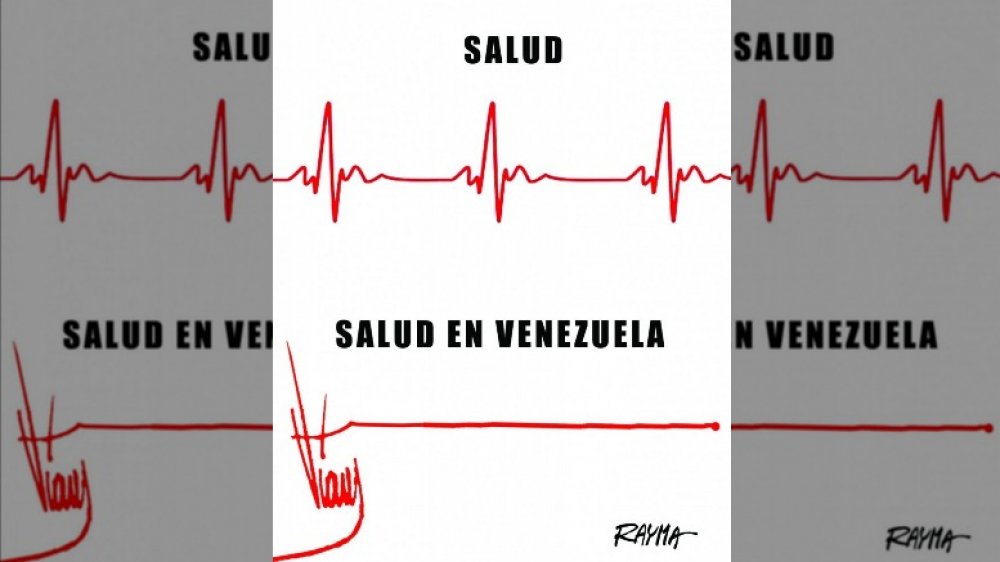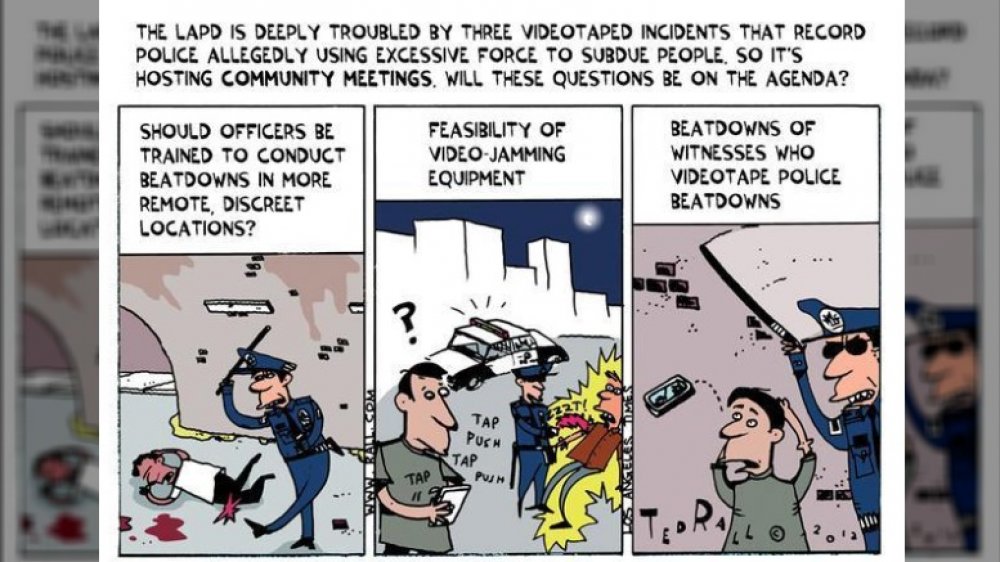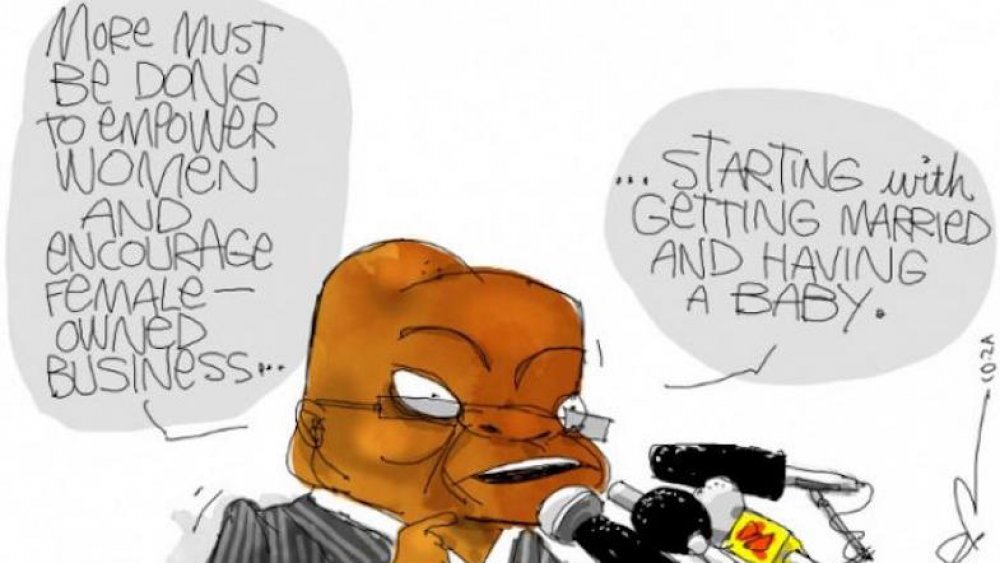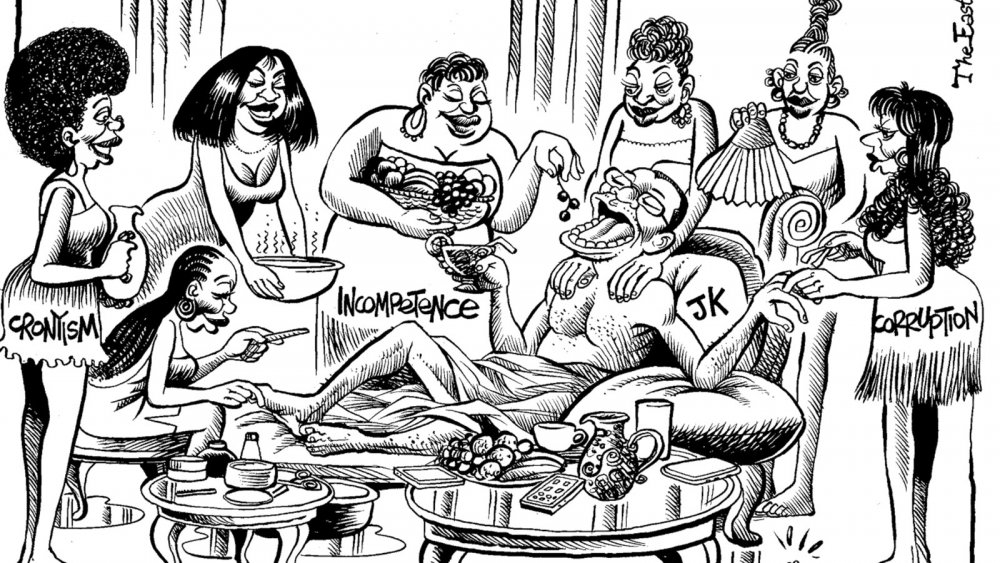Political Cartoons That Got People Fired
Political cartoons are just the coolest. You get to make fun of people in power in a funny way, plus you get get big ups for your art if you do it right. Even people who don't read the news might check out your comic. Who wouldn't want that job?
But the gig is also extremely dangerous. Your publication can receive angry letters, people can disagree with you for stupid reasons, and there's always the question of what "too far" really means. Can you make fun of the president of your country? How about the rich mucky-mucks who own the paper that publishes your cartoons?
This list is full of the people who lost their jobs because of their political cartoons. They're the ones that got off easy—depending on the government's laws surrounding free speech, cartoonists can be attacked or thrown in prison for their work. The Comics Code Authority isn't a thing, but visual media is still heavily scrutinized. People tend not to forget it when someone who demands their respect is drawn like a giant on a toilet.
'Gargantua' is French for 'bite me'
The granddaddy of cartoonists who didn't give a hoot was Honoré Daumier. He was a lithographer (a drawer of cheap pictures) whose work turned political in his twenties. His 1831 cartoon "Gargantua," according to the Hartford Courant, was the one that really cemented his place in history.
Here's the context: There was a huge amount of tension between the classes in France at the time. "Gargantua" shows King Louis Philippe as a giant who greedily eats up bags of taxes from peasants. His appetite seems endless. But that's not a throne he's sitting on—it's a toilet. From his backside come contracts that are snatched up by official-looking people.
"Gargantua" actually wasn't published in a newspaper, but was offered for sale directly to readers according to the New Yorker. The king was usually pretty good about going along with jokes, but Daumier was thrown in jail for five months for this nasty drawing. Daumier lost his gig (the paper folded because of the king's interference) and probably a fair amount of chill, but he kept on drawing political work afterwards. But Daumier mostly did cartoons and lithographies to pay the bills. His real love was painting. Encyclopedia Britannica goes into depth about his paintings and how masters like Monet loved his work. Most of it is charming, Impressionist paintings of ordinary people living lives and trying to do their thing.
Rogers, we hardly knew ya.
Most political cartoonists have a strong political leaning, and it seems necessary to do their jobs well. Rob Rogers would certainly agree. According to CBS News, Rogers was fired in June 2018 after working 25 years at the Pittsburgh Post-Gazette as their political cartoonist. Rogers had focused a lot of attention on U.S. president Donald Trump in his cartoons, the last of which before he was fired mocking a supporter of Trump's policies being gored (with no blood) by a steel beam.
A new editorial director had taken over Rogers' paper in March of that year, and Rogers alleged that he had rejected 19 cartoons by Rogers before eventually firing him. The Philadelphia Inquirer confirmed that they had hired the editorial director after he wrote an op-ed defending controversial statements by Trump. If this seems sketchy to you, that's because it is. Even Bill Peduto, the mayor of Pittsburgh who Rogers had made fun of in past comics, came out to defend him.
But don't feel too bad for Rob Rogers. According to his website, his 2018 book includes six cartoons that were rejected by the paper during his final few months. He told his version of the events leading up to his firing in comic form on The Nib, which is the definition of hilariously petty.
Canada's political cartoons are far from polite
Michael de Adder may have been inspired by Rob Rogers when he drew a political cartoon of President Trump golfing around two people facedown in what looks like a sinkhole. According to CNN, the cartoon alludes to the story of migrants Óscar Alberto Martínez Ramírez and his daughter Angie Valeria. The two of them died in the process of attempting to cross onto American soil from Mexico.
The order of events seems to be that de Adder tweeted out the comic, and then submitted it to the Halifax paper the Chronicle Herald, where it was published. He admitted on Twitter that he didn't submit the cartoon to his home paper Brunswick News because he was afraid of getting fired. But he was let go from the paper's parent company anyway after the golfing cartoon dropped.
According to the paper, they were already in negotiations with de Adder about his contract at that time, and the firing was just coincidental because they had decided to take on another cartoonist instead of him. But de Adder was quick to point out that the paper was owned by people connected to a massive oil company with ties to the United States. Is this sketchy or just a coincidence? You be the judge.
Thank God for country boy political cartoonists
Now for something a little more wholesome: Rick Friday was a guy who liked drawing cartoons about farmers and the farming life. But he worked in Iowa, a huge center of agriculture where giant farm companies dealing with small farmers and vice versa was an everyday thing. According to KCCI Des Moines, a cartoon on this exact subject got him fired in May 2016.
The cartoon addresses directly how big companies like Monsanto make money off the work of small-time farmers. One seed company was so mad that they pulled all their ads from the paper after the cartoon ran. There were also allegedly some people at the paper who disagreed with it. So after making a career drawing for the paper for 21 years, Friday was fired and his editor was reprimanded.
But this story actually does have a happy ending: Friday was eventually offered his job back after some begging and pleading from the paper. He supposedly had job offers pour in after his firing and drew more than three year's worth of cartoons in the two months he was out of work. He came back to "prove a point" about free speech and signed a one-year contract with the paper.
Political cartoonist friends forever
Stories about political cartoonists don't always mention their editors. But it's especially relevant to the story of Dennis Wilen and Lalo Alcaraz, the dynamic duo who got in trouble at the Patch site for Brentwood, California. For those not in the know, a Patch site is a mini-website for a specific community that's part of the bigger AOL Patch network. The Patch sites focus on hyper-local news in one community.
Wilen was the editor of the Patch site for Brentwood, and according to LA Observed, he was absolutely psyched to run a cartoon drawn by Alcaraz. The cartoon appeared next to a feature on Cinco de Mayo, makes fun of the area's alleged attitude toward the holiday and Latino Americans. Wilen thought it was hilarious and thought it was a funny commentary from the Latino Alcaraz. Brentwood is also where Arianna Huffington, the head editor of Patch, lives. That may add context for the fact that the New York editors of Patch told Wilen that they found the cartoon racist. Wilen pushed back. He was fired ... and went to go work with Alcarez on his own site.
By the way, Alcaraz is a legend in cartooning, plus consulted on the Disney movie Coco and advocated to prevent Disney from trademarking the holiday Dia de los Muertos. He's the kind of guy whose work you'd want on your website.
Sometimes a political cartoonist just has to bail
Rayma Suprani had her work cut out for her as a political cartoonist in Venezuela. According to PRI, a series of cartoons critical of President Hugo Chavez got her fired from her job. But her story is much more complicated than just losing a job. The timing of Suprani's firing is interesting, considering that Chavez had already passed away. She hadn't been shy about messing with Chavez via political cartoons when he was alive. Incredibly gutsy, consider that drawing Hugo Chavez's face can land you in prison for 30 months according to Cartoonists Rights Network International.
The cartoon that got her fired in 2014 portrays a cardiac report showing a regular heartbeat outline, then a flatline after Chavez's signature. This happened after the paper changes hands to owners that supported the new president Nicolas Maduro (a pro-Chavez candidate).
Normally, this would be the end of the story. But Suprani started to be harassed in her pursuit to find new work, especially by Maduro on his weekly TV program. Her picture was shown on state-run television programs, which was tantamount to intimidation in the political climate. She couldn't find work despite her huge following, and left the country in 2015. She now draws from the United States.
One political cartoon spoils the bunch
In June 2019, the New York Times made the decision to eliminate running political cartoons in the international versions of its newspaper. The journalism world cried out, saying this was dumb and out of nowhere. But the real story suggests there was a reason.
According to WQAD, editor Patrick Chappatte took the heat when a political cartoon many readers deemed antisemitic was printed in an international version of the Times in April. The Washington Post reported that he was the initial advocate for having cartoons in the Times, period. The cartoon that ended his career at the newspaper featured Israeli prime minister Benjamin Netanyahu as a dog with a Star of David on his collar leading a blind, yarmulke-wearing President Donald Trump according to CNN. But no one on the Times's political cartoon staff drew the comic. A syndication service added it into the paper, and was drawn by Portuguese artist António Moreira Antunes (who defended the cartoon).
Was the canceling and firing of Chappatte instigated by this one cartoon? It looks that way. But it's worth knowing that the U.S. version of the Times already didn't print cartoons. The head people at the Times came out and said that the decision to stop printing them altogether was already on the table when this decision was made. So as bad as it may have been for Chappette, it was the end of a greater era for political cartoons in print.
This isn't Toon Town. This is Chinatown
If you've watched The People vs. O.J. Simpson, you know that Los Angeles has a troubled history when it comes to the police force. Maybe no one knows that better than Ted Rall, the political cartoonist that was fired for writing about his own (alleged) arrest.
According to the International Business Times, Rall wrote a column in the Los Angeles Times about an incident where a cop with the Los Angeles Police Department (LAPD) handcuffed him for jaywalking. Fair enough. A journalist working at a paper writes a personal account of what may be the most Los Angeles story ever (on a blog section of the paper, no less). He also claimed to have taped the incident happening. But Rall had drawn dozens of cartoons criticizing the LAPD and their reputation for using excessive force. A union tied to the LAPD had already pushed a San Diego paper to fire writers critical of the police there, as the Times itself reported.
Arguably already on the LAPD's usual suspects list, Rall was fired from the L.A. Times after the LAPD claimed to have shown the paper evidence that the incident never happened. Was it justified? No one can say without seeing all the evidence. But without Rall's constant shots at the police for things like tasering people and beating suspects, this probably wouldn't have happened.
Those who can't political cartoon, teach political cartoons
Some people have nightmares about snakes and their teeth falling out. Teachers have nightmares about "concerned parents," mostly because of stories like this.
Robert Duncan was a New Orleans teacher who, in 2012, decided to teach his students about political cartoons. Every kid in his class had to draw one about the current political climate. According to Nola.com, one of the students drew a cartoon featuring then-U.S. president Barack Obama, with a mark on his temple some would eventually conclude was a bullet hole. Duncan included this cartoon in the group that he posted out in the hallway of the school. The cartoons hung in the hallway for a week. Everyone (including the school principal) knew they were there. But Duncan got in trouble for displaying the cartoon when a parent snuck into the school—illegally—and snapped pictures that she leaked to the press. That's a top tier busybody, right there.
Duncan wasn't the only teacher at his school to teach about political cartoons. But he was the only one to be served six months administrative leave and then be fired for a cartoon his student drew. The kicker: The student behind the "bullet hole" never meant for that to be the cartoon's meaning. She just dropped her marker and couldn't fix her assignment before it was due.
The political cartoonist who lived on thin ice
Not every cartoonist on this list is a saint working for the just cause of freedom of the press. Maurice Sinet (a.k.a. Siné) is definitely not a hero to some. But he was still fired due to a cartoon he drew, so his story belongs here.
Siné is an alum of legendary political magazine Charlie Hebdo, which was attacked in 2015 by two terrorists tied to Al-Qaeda. But he wasn't someone who went on to different things—according to RFI, he was fired from the magazine for making antisemitic remarks about the son of French president Nicholas Sarkozy. According to French-language comics news site Actua BD, Siné was asked by his management to write an apology for the cartoon. When he refused, he was fired.
What this story misses is that Siné's views were already considered questionable after an anti-Israel tirade on a radio show decades before. He issued an apology for that, and was declared not guilty of inciting racial hatred through his remarks. He even won a lawsuit for wrongful termination from Charlie Hebdo was was awarded between 40,000 and 90,000 euro (depending on sources). But despite all of this, Siné retained a cult following for his cartoons mocking the French government and religious figures.
Great political cartoons, seven years too early
Jeremy Nell, a.k.a. JERM (political cartoonist nicknames rule), may be the unluckiest guy in South Africa. According to PRI, He was fired from his position at The New Age in 2012 for basically just doing his job. He drew editorial cartoons about the African Ruling Congress and then-President Jacob Zuma, who served as president of South Africa from 2008 until 2019. But like so many on this list, his targets were just a little too cozy with his paper.
Zuma is widely recognized as a controversial figure today. Al-Jazeera reports that his rap sheet goes all the way back to the 1990s, with charges ranging from arms dealing to bribery. As of 2019, he has yet to be tried in a court in any conclusive way. The guy just keeps appealing and angling for delays.
But it was a different world in 2012, and Zuma had ties to the owners of The New Age, so JERM got the boot. But he found a new gig at Africa's biggest TV network, according to BizCommunity. He even went on the record to drag "dwindling" print media and say how excited he was to now join digital media, the future of cartooning.
Gado, king of the (benevolent) trolls
Africa produces some of the best troll-style political cartoonists, which is absolutely meant as a compliment. Reuters reported in 2016 that Godfrey "Gado" Mwampembwa was fired from the newspaper the Daily Nation after working there for 23 years. The word was that Gado's tenure was just coming to a "natural" end. But he and many others suspected otherwise.
Gado already had a bit of a reputation for fiercely going after people in power before the Daily Nation fired him. He had founded a satire-based puppet show called XYZ at the time of his firing. Kenyan president Uhuru Kenyatta tried to sue Gado's paper because of one of his cartoons before the dude had even been elected president. The cartoon, which was published in the Daily Nation's sister publication the East African (and reprinted in the New York Times Review of Books), that sent Gado on a sabbatical and then to unemployment showed the president of Tanzania at the time lounging around like a Greek god. He's being fed by women labelled Corruption, Cronyism, and Incompetence. The paper was banned entirely from Tanzania for a time, which is funny considering Gado is a Tanzania native.
But Gado's doing just fine. The Financial Times reported in 2017 that he was still drawing and had intentionally moved closer to the president's home after losing his job. A political troll's job is never done.
